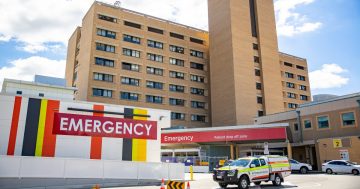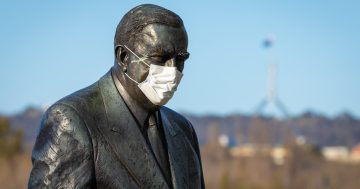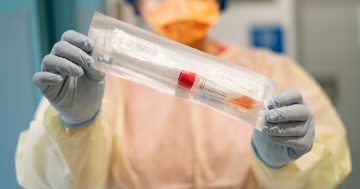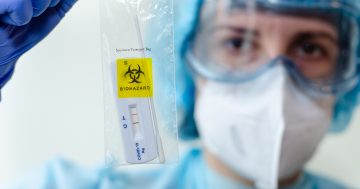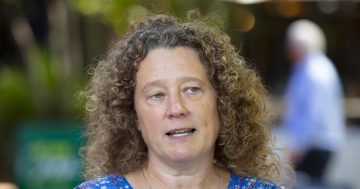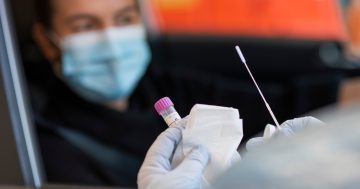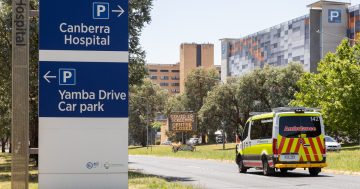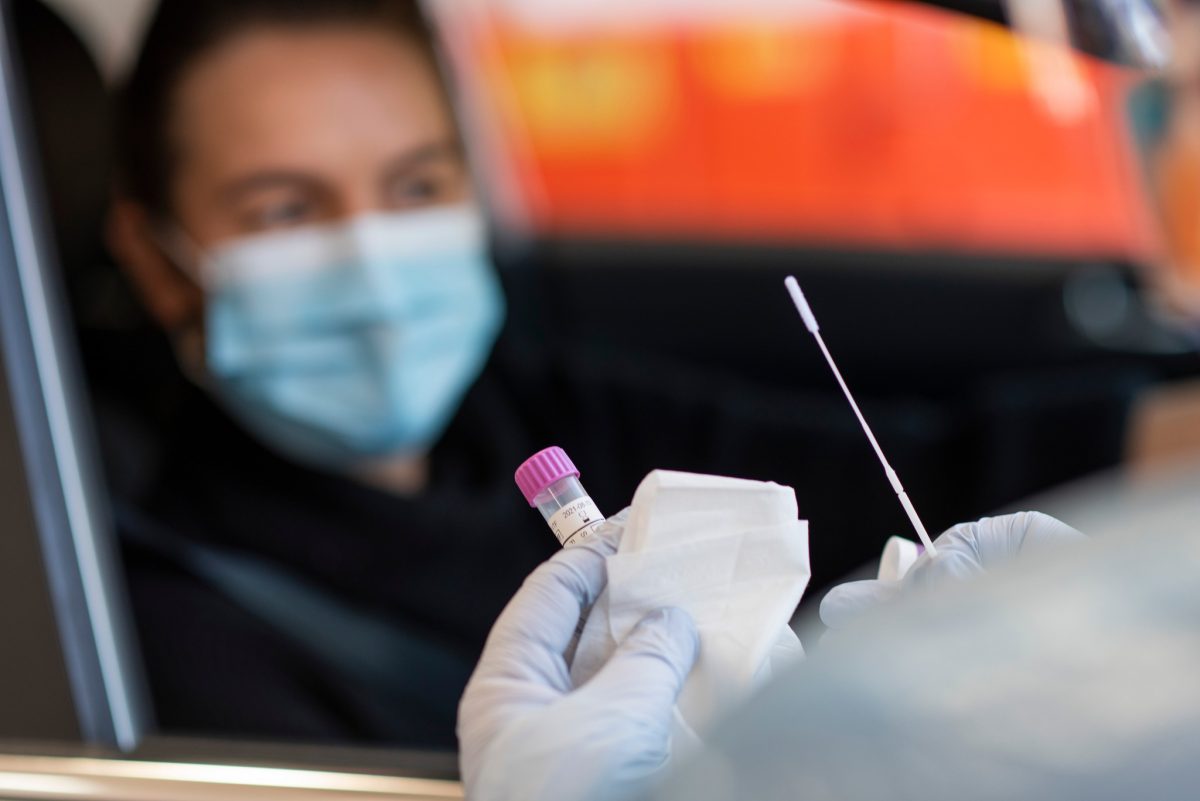
The ACT recorded 482 COVID-19 cases in the week ending 3 November, up from 168 in the week ending 5 October. Photo: Canberra Health Services.
Australia is expecting a new wave of COVID-19 as case numbers rise across the country, and ACT Health is reminding Canberrans to keep themselves and others safe.
COVID-19 cases have been rising steadily in the ACT in recent weeks. According to the most recent data, 482 cases were recorded in the week ending 3 November, up from 370 cases a week earlier and 168 cases a month earlier.
This is the highest number of COVID cases the ACT has recorded since mid-June, shortly after a significant spike led Canberra Health Services to raise its alert level to amber and introduce mandatory mask-wearing requirements at CHS facilities.
However, ACT Health said the situation is quite different from the outbreak of COVID-19, and the focus is now more on preventing severe illness.
“We are in a very different place now than we were three years ago and are now more focused on the severity of illness and the impact on the health system than overall case numbers. There is no indication of more severe disease related to the increasing COVID-19 cases, with hospitalisations, ICU admissions, and deaths currently remaining stable,” an ACT Health spokesperson told Region.
“We will continue to see fluctuation in COVID case numbers throughout the year in response to emerging variants, waning immunity and social behaviour. This could include increases over the summer holiday period as people socialise and travel more,” the spokesperson said.
“ACT Health continues to monitor and assess the COVID situation and will adapt our response as required.”
ACT Health has reminded Canberrans they have a role to play in keeping the community safe, and encouraged people to stay home if they are unwell, test for COVID-19 if they have symptoms and stay up to date with vaccinations.
“All Canberrans play a role in keeping themselves and the people around them safe. Staying COVID Smart remains important,” ACT Health said.
“ACT Health encourages Canberrans to consider the people around them – particularly those who may be at higher risk of severe illness from COVID – and how they can use COVID Smart behaviours to protect others.
“For example, people visiting public indoor spaces and environments can be mindful of coming into contact with people who are immunocompromised (at hospital, for example). These people can do a rapid antigen test and check they haven’t got COVID unknowingly, or they can maintain good cough and hand hygiene.”
Across Australia, COVID-19 cases have been rising, with every jurisdiction recording an increase in cases in the week ending 24 October.
Over the border in NSW, case numbers rose 23.8 per cent from the previous week, and it is believed that at least 50 per cent of cases are the new E.5 variant, also known as ‘Eris’.
NSW Health’s Director of Communicable Diseases Christine Selvey recently told ABC News that cases are “certainly higher than … a couple of months ago and [have] been slowly increasing over the past few weeks”.
“Nobody has a crystal ball, but the modelling that we do have suggests that the increase will continue up through and into December.”
Ms Selvey said there is a chance cases could peak at Christmas time again.
“We had that first Omicron wave that coincided with Christmas and the New Year when it was really, really hectic and again last year around Christmas time, so certainly it could be – we don’t expect it to peak until some time in December,” she said.
However, without regular testing, Ms Selvey said it is more difficult to keep track of potential COVID-19 waves.
“When we had lots of PCR testing and lots of RAT testing and people registering the RATs, we thought we had a pretty good idea of how many people had symptoms with COVID,” she said.
“But we don’t have that level of granularity anymore, so it’s a bit hard to compare the waves to each other.”












